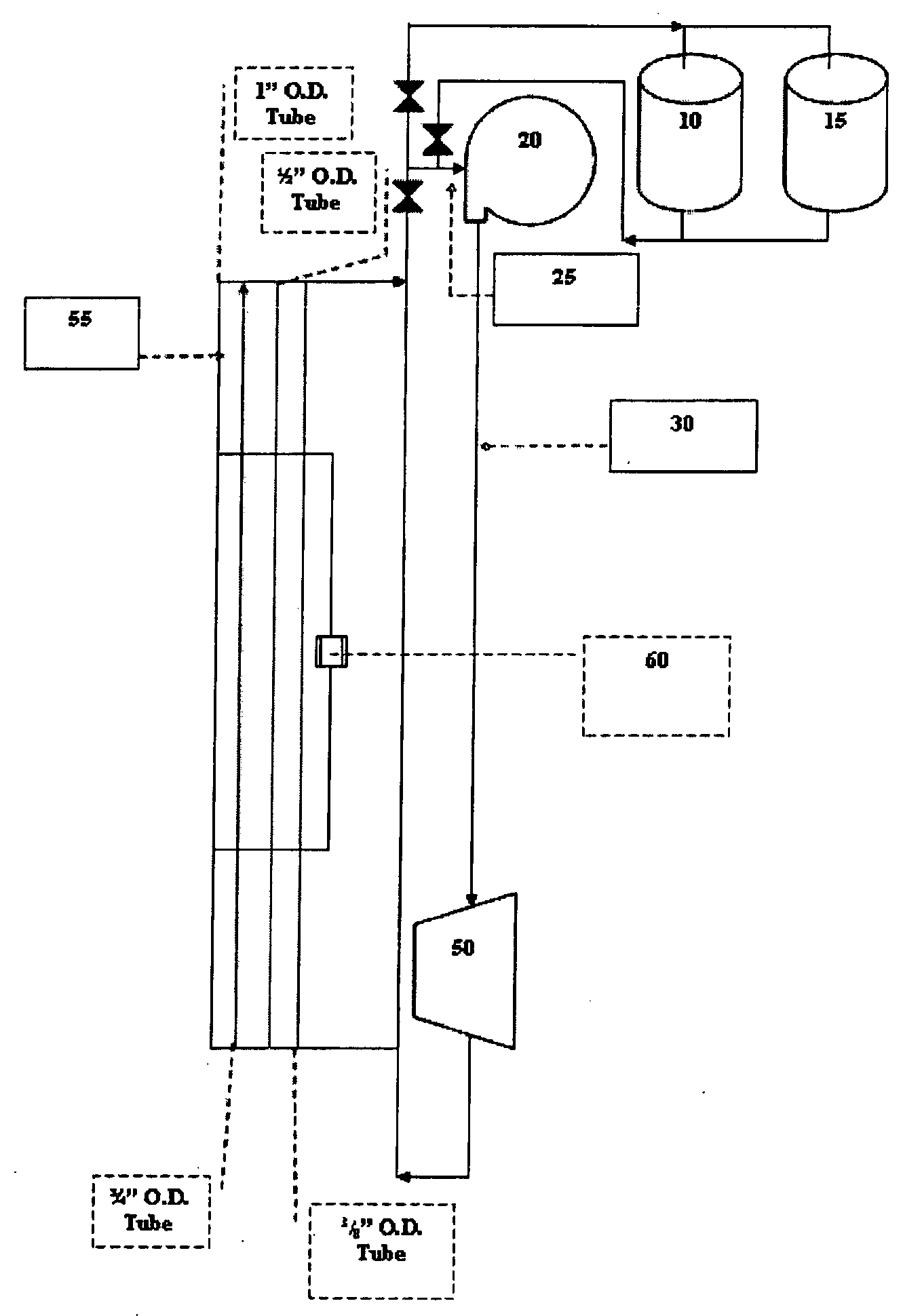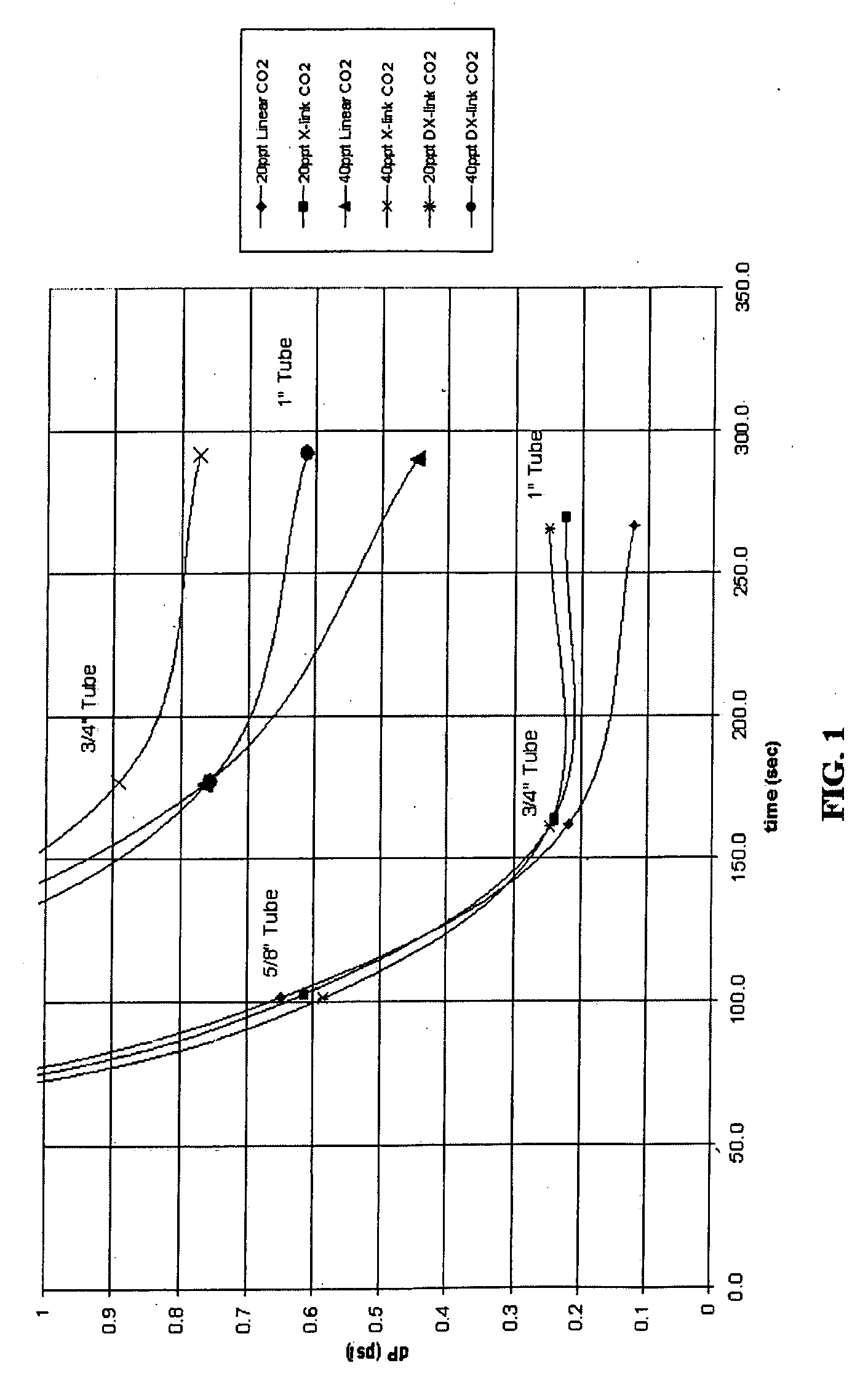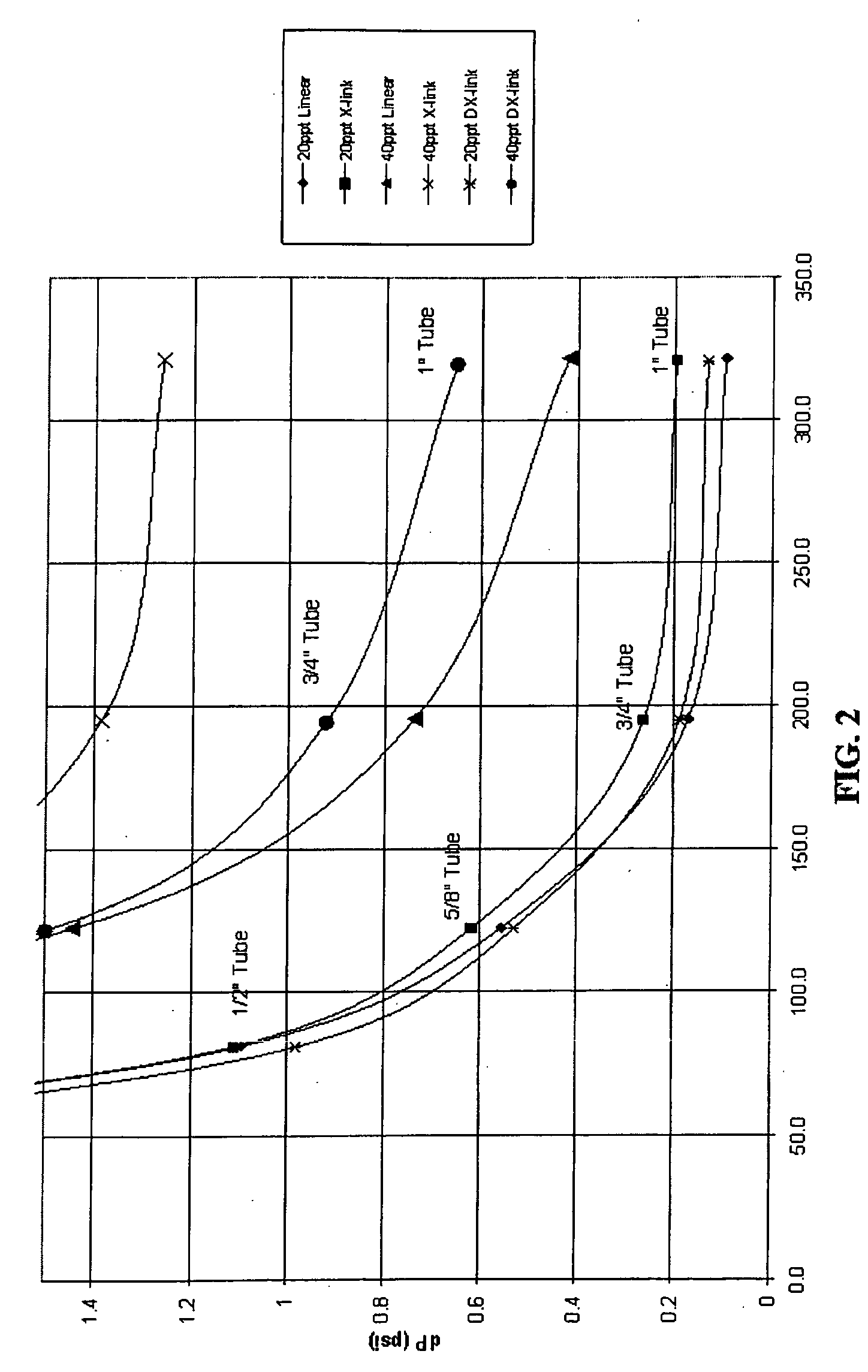METHOD OF STIMULATING SUBTERRANEAN FORMATION USING LOW pH FLUID
a subterranean formation and fluid technology, applied in the direction of sealing/packing, chemistry apparatus and processes, wellbore/well accessories, etc., can solve the problems of increasing the viscosity of the fluid, affecting the formation, and the effectiveness of conventional crosslinking agents in the presence of certain foaming agents, etc., to achieve excellent time-delay crosslinking, minimize permeability damage, and reduce the effect of permeability
- Summary
- Abstract
- Description
- Claims
- Application Information
AI Technical Summary
Benefits of technology
Problems solved by technology
Method used
Image
Examples
example 1
[0056]A gel was prepared by adding 7.5 ml of a polymer slurry containing the equivalent of 3.6 g of carboxymethyl guar having a degree of substitution (DS) of 0.17 to one liter of vigorously stirred tap water. The fluid was also treated with 1.0 ml of a 50% (by wt) solution of tetramethyl ammonium chloride and 5.0 ml of an acetic acid sodium acetate buffer designed for a pH of 4.5.
[0057]The speed of a Waring blender was adjusted to 1500 rpm and 250 grams of the gel was then poured into the blender. Blender jars were then inserted into the blender and mixing was started and a stable vortex was formed with the nut of the blades being visible. After approximately 1 minute, zirconium N,N-bis 2-hydroxy ethyl glycine (ZrBHEG) as crosslinking delaying agent was added and the pH of the solution was then recorded. Approximately 0.40 ml of a zirconium complex of alkanol amine in propanol, commercially available as Tyzor-223 from E.I. DuPont de Nemours and Company, was then injected into the b...
example 2
[0059]This Example illustrates the effectiveness of the delay agent to fluid friction pressure when injecting the fluid through a foam loop with multiple pipe sizes.
[0060]The crosslinking delay efficiency of an aqueous fluid prepared in accordance with the invention was determined using a single pass foam rheometer. To measure early time, the heated coil section was bypassed and run directly through the capillary viscometer section. Each of the five tubes of the capillary viscometer section had a pressure transducer to measure the differential pressure and to calculate n′, K and viscosity.
[0061]To create a baseline in order to compare the pressures, a liner gel with no crosslinker was run through the rheometer first. A 20 ppt and a 40 ppt gel were passed through the system with and without carbon dioxide. The next sets of tests were performed with the same gel concentrations but with optimized crosslinker loading. This provided the maximum upper and lower pressures through the rheom...
examples 3 and 4
below illustrate the rheological stability of fluids in the absence of a gas and thus present a means of optimizing the liquid phase components. The method used for these Examples is defined in the American Petroleum Institute's ANSI / API Recommended Practice 13 M entitled “Recommended Practice for the Measurement of Viscous Properties of Completion Fluids”, First Edition, 2004. The tests were conducted using an automated Fann 50 viscometer equipped with an R1B5 cup (radius=1.8415 cm; length=14.240 cm) and bob (radius=1.5987 cm; length=8.7280 cm) assembly.
PUM
 Login to View More
Login to View More Abstract
Description
Claims
Application Information
 Login to View More
Login to View More - R&D
- Intellectual Property
- Life Sciences
- Materials
- Tech Scout
- Unparalleled Data Quality
- Higher Quality Content
- 60% Fewer Hallucinations
Browse by: Latest US Patents, China's latest patents, Technical Efficacy Thesaurus, Application Domain, Technology Topic, Popular Technical Reports.
© 2025 PatSnap. All rights reserved.Legal|Privacy policy|Modern Slavery Act Transparency Statement|Sitemap|About US| Contact US: help@patsnap.com



